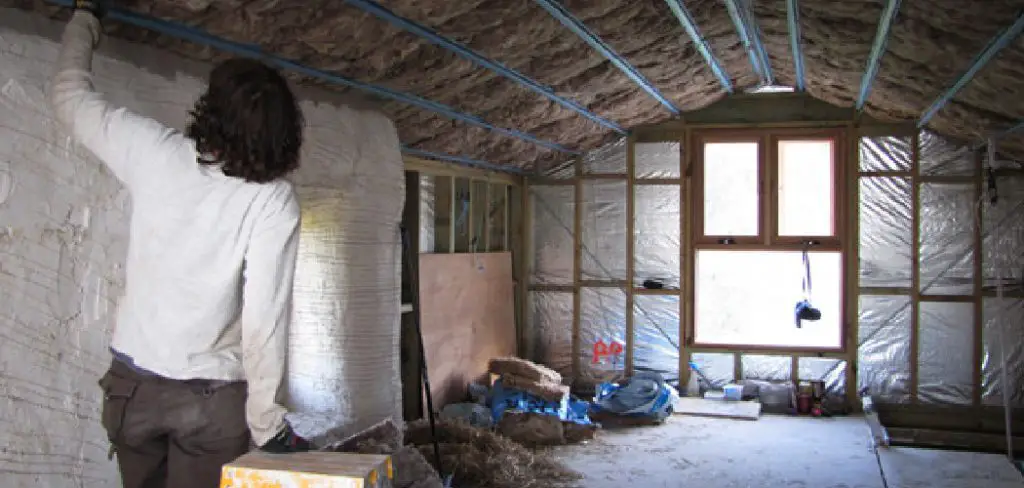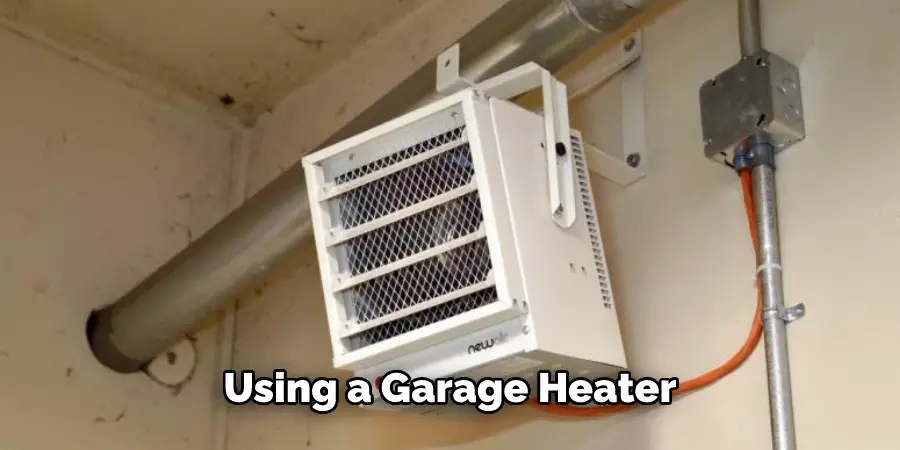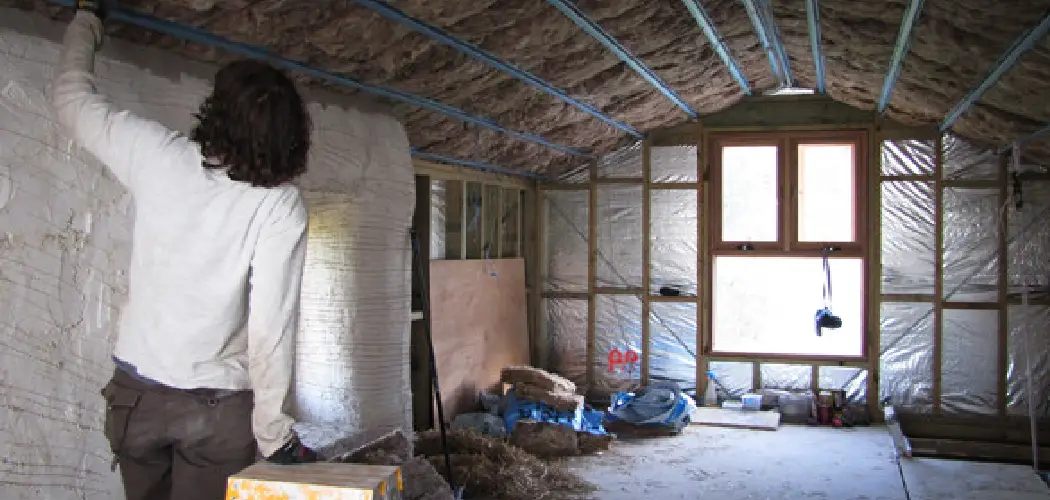Opening your garage door to find your car covered in a thin layer of ice can be frustrating. You may be tempted to turn on the heat, but that’s not an option if you don’t have electricity in your garage. This article will discuss how to heat a garage without electricity. So, instead of resigning yourself to a cold winter, try one of these methods for heating your garage without electricity. Then, keep reading to learn more.

In winter, the temperature in your garage can drop to freezing or below. This can make it challenging to work on your car or complete other tasks in your garage. If you don’t have electricity, the most obvious solution is to buy a space heater. However, space heaters require electricity to operate and are not a viable option if you don’t have power in your garage.
Summary: Heating a garage without electricity can be a challenge, but there are several ways to do it. One option is to use a wood-burning stove or fireplace, providing ample heat and creating a cozy atmosphere. Another option is to use a propane heater, which is clean-burning and efficient. Insulating the garage and using passive solar heating techniques can also help to keep the space warm without electricity.
A Detailed Guide on How to Heat a Garage Without Electricity
Step 1: Insulation
The first step in heating a garage without electricity is to insulate the space. Proper insulation will help retain the heat generated by your chosen heating method, reducing heat loss and making your garage more energy-efficient. Focus on insulating the walls, ceiling, and garage door. Use insulation materials such as fiberglass batts, spray foam, or rigid foam boards. Be sure to seal any gaps and cracks in the walls, floor, and door with weatherstripping and caulk.
Step 2: Passive Solar Heating
One of the most effective ways to heat a garage without electricity is by using passive solar heating. Start by designing or retrofitting your garage to maximize sunlight exposure. Install large windows or skylights on south-facing walls, as this will allow the sun to shine directly into the garage, providing natural heat. Use thermal mass materials like concrete, brick, or stone for the floor and walls, as these materials can absorb and store heat during the day and release it slowly at night, keeping the space warm.
Step 3: Solar Air Heater
A solar air heater is another excellent option for heating a garage without electricity. These heaters are simple, low-cost, and highly effective. Build or purchase a solar air heater and mount it on the south-facing wall of your garage. The air inside the heater will heat up as it absorbs sunlight, and a fan or natural convection will circulate the warm air throughout the garage. You can even connect multiple solar air heaters together to increase their heating capacity.
Step 4: Wood or Pellet Stove
Wood or pellet stoves are a traditional and reliable way to heat a space without electricity. Choose a stove with the appropriate heating capacity for your garage size, and follow the manufacturer’s guidelines for proper installation and ventilation. Wood and pellet stoves require a steady supply of fuel, so ensure you have access to a reliable source of wood or pellets. Burning wood or pellets produces heat through combustion, which can efficiently warm your garage during cold weather.
Step 5: Propane or Kerosene Heaters
Portable propane or kerosene heaters are another option for heating a garage without electricity. These heaters are available in various sizes and capacities, making it easy to find one that suits your needs. When using a propane or kerosene heater, be sure to follow the manufacturer’s safety guidelines, as these heaters produce carbon monoxide, a dangerous gas. Ensure proper ventilation and always keep a carbon monoxide detector nearby.
Step 6: Radiant Heat Panels
Radiant heat panels use infrared technology to heat objects and people directly, without heating the air. They can be mounted on walls or ceilings and provide a comfortable, even heat throughout your garage. Many radiant heat panels are available in propane or natural gas models, so you won’t need electricity to operate them. Make sure to follow the manufacturer’s guidelines for installation and safety precautions.
Step 7: Insulated Curtains or Blinds
Using insulated curtains or blinds on your garage windows can help retain heat by preventing cold air from entering and warm air from escaping. Insulated curtains are designed with a thermal lining to provide a barrier against heat loss. Close these curtains or blinds during the night or when the sun is not shining directly into the garage to maximize their effectiveness.
Step 8: Garage Door Insulation
The garage door is often the largest source of heat loss in a garage. Insulating the door can significantly improve the overall energy efficiency of the space. You can either purchase an insulated garage door or retrofit your existing door with insulation materials such as foam board, fiberglass batts, or reflective insulation. Be sure to seal any gaps around the door with weatherstripping to prevent drafts.
Step 9: Weatherstripping and Draft Stoppers
Gaps around windows, doors, and other openings can let cold air into your garage and allow warm air to escape. Installing weatherstripping around these openings will create a tight seal, preventing drafts and improving energy efficiency. Weatherstripping materials include adhesive-backed foam tape, V-strip, and door sweeps. In addition to weatherstripping, use draft stoppers (also known as door snakes) at the base of your garage door and any other exterior doors to block cold air from entering.
Step 10: Optimize Air Circulation
Proper air circulation is essential for maintaining a comfortable temperature in your garage. Make sure to keep the space well-ventilated, especially when using combustion-based heating methods like wood stoves, propane heaters, or kerosene heaters. To improve air circulation, consider installing vents, exhaust fans, or ceiling fans in your garage. These devices can help distribute warm air evenly throughout the space and prevent the buildup of dangerous gases like carbon monoxide.
Step 11: Maintain Your Heating System
Regular maintenance is crucial for ensuring the efficiency and safety of your garage heating system, regardless of the method you choose. For combustion-based heaters, clean and inspect the unit regularly to ensure proper operation and prevent fire hazards. For solar air heaters, clean the collector surface to maximize sunlight absorption. Additionally, check weatherstripping, insulation, and draft stoppers for damage or wear, and replace them as needed to maintain a well-insulated and draft-free garage.
Step 12: Monitor Temperature and Humidity
Maintaining a comfortable temperature and humidity level in your garage is essential for both your comfort and the longevity of your belongings. Use a thermometer and hygrometer to monitor the temperature and humidity levels in your garage. This information will help you make adjustments to your heating methods and insulation as needed to maintain an optimal environment.
By following these steps, you can effectively heat your garage without relying on electricity. This will not only save you money on energy bills but also reduce your environmental impact and provide a comfortable space for working, storage, or hobbies.
Tips and Advice
- You can also try using a garage heater that doesn’t require electricity, such as a propane or kerosene heater.

- Make sure to open the doors to your garage to allow air circulation and prevent carbon monoxide buildup.
- If you have an attached garage, you can open the door to your house to help heat the space.
- Insulating your garage doors will also help to keep the heat in.
- Consider using heat lamps to heat specific areas of your garage as needed.
Heating Your Home Using Your Normal Heating System
If you have a home with a normal central heating system, you can use this to heat your garage. First, you will need to open up the vents that go to your garage so that the hot air from your furnace can enter it. You may also need to insulate these ducts so that the heat doesn’t escape before it reaches the garage. This is a relatively low-cost and straightforward way to heat your garage, but it will require keeping your furnace running constantly.
Heating Your Garage With a Portable Heater
If you don’t have a central heating system or want a more portable solution, you can use a small space heater to heat your garage. These heaters are relatively inexpensive and can be plugged into any standard outlet. Be sure to get a heater rated for the size of your garage so that it can effectively heat the space. However, you will need to keep an eye on the heater, as they can be a fire hazard if they are left unattended.
Heating Your Garage With the Sun
If you have a south-facing garage door, then you can open it during the day to let in the sun’s heat. This is an effective way to heat your garage, but it obviously won’t work at night or on cloudy days. You can supplement this method by using a few space heaters to help hold in the heat when the sun isn’t shining.
As you can see, there are a few different ways to heat your garage without electricity. Consider all of your options before deciding on the best solution for your needs.
How Can I Heat My Garage for Free?
If you’re like most people, your garage is the last place you think about when it comes to heating. But if you spend time working in your garage, you know how important it is to have a comfortable space to work in. Here are a few ways to heat your garage without spending a lot of money.
1. Take advantage of the sun. If your garage has any windows, open them up during the day to let the sunshine in. This will help warm up the space naturally.
2. Insulate well. Ensure your garage door is insulated, and there are no gaps or cracks around the door where heat can escape. Also, consider insulating the walls and ceiling of your garage to help keep the heat in.

3. Use a space heater. If you have access to an electric outlet, you can use a space heater to warm up your garage. Read the instructions carefully and place the heater away from any flammable materials.
4. Burn some candles. Candles can produce quite a bit of heat. If you have a few safe places to put them, burning candles in your garage can help take the chill out of the air.
5. Layer up. Wearing extra layers of clothing is always an excellent way to stay warm when cold outside. So, if you’re working in your garage and it’s not heated, be sure to dress in layers to stay comfortable.
By following these tips, you can stay warm in your garage all winter long without spending much money on heating. So, don’t let the cold weather keep you from working on your latest project. Just be sure to take some extra steps to stay warm, and you’ll be just fine.
Conclusion
So there you have it how to heat a garage without electricity – a few ways to heat your garage without electricity. If you’re looking for an affordable way to keep your garage warm this winter, one of these methods should work for you. If you have tried any of these methods before, let us know what worked (or didn’t work) for you.
You Can Check It Out To Unclog Garage Floor Drain
I am Rick. I grew up helping my dad with his handyman service. I learned a lot from him about how to fix things, and also about how to work hard and take care of business. These days, I’m still into fixing things- only now, I’m doing it for a living.
I’m always looking for new ways to help people grow and develop. That’s why I have created this blog to share all my experience and knowledge so
that I can help people who are interested in DIY repair.

